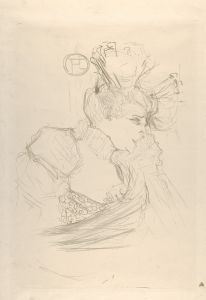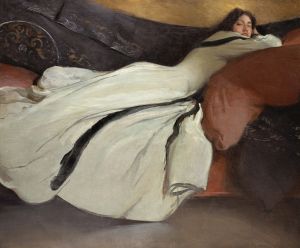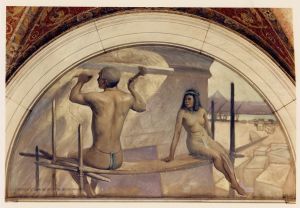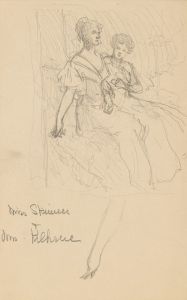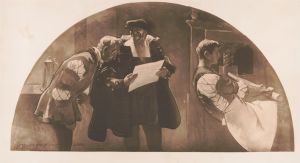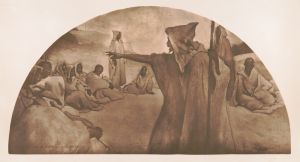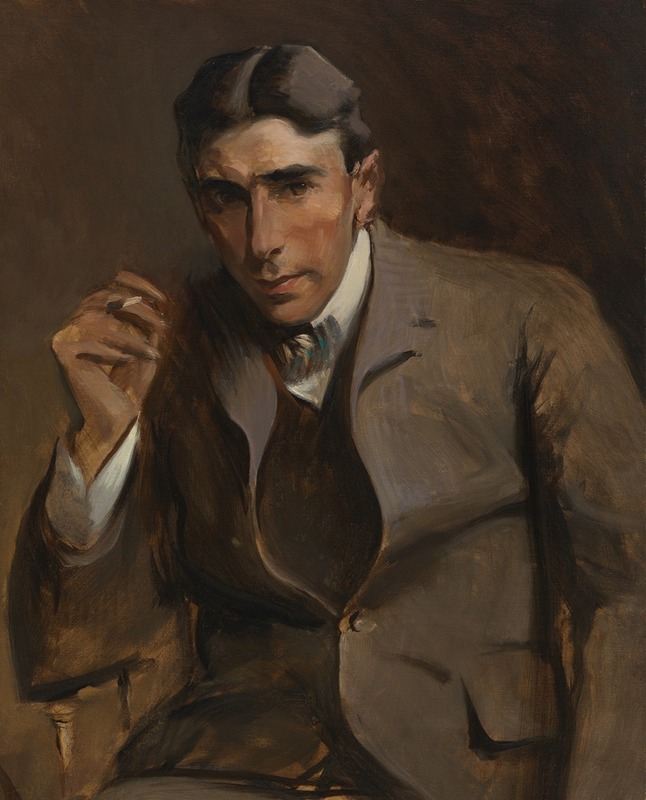
Newton Booth Tarkington
A hand-painted replica of John White Alexander’s masterpiece Newton Booth Tarkington, meticulously crafted by professional artists to capture the true essence of the original. Each piece is created with museum-quality canvas and rare mineral pigments, carefully painted by experienced artists with delicate brushstrokes and rich, layered colors to perfectly recreate the texture of the original artwork. Unlike machine-printed reproductions, this hand-painted version brings the painting to life, infused with the artist’s emotions and skill in every stroke. Whether for personal collection or home decoration, it instantly elevates the artistic atmosphere of any space.
Newton Booth Tarkington by John White Alexander is a portrait painting created by the American artist John White Alexander. The artwork depicts Newton Booth Tarkington, a prominent American novelist and playwright, who was one of the most popular and critically acclaimed authors of the early 20th century. Tarkington is best known for his novels "The Magnificent Ambersons" and "Alice Adams," both of which won the Pulitzer Prize for Fiction.
John White Alexander, the artist, was a renowned portrait painter and illustrator, celebrated for his elegant and expressive style. Born in 1856 in Allegheny, Pennsylvania, Alexander gained recognition for his ability to capture the personality and character of his subjects. His works often featured fluid lines and a sense of movement, reflecting his background in illustration and his exposure to European art movements during his time abroad.
The portrait of Newton Booth Tarkington is an example of Alexander's skill in portraying notable figures of his era. While specific details about the commission or creation of this particular painting are not widely documented, it is consistent with Alexander's body of work, which frequently included portraits of prominent cultural and intellectual figures. The painting is believed to have been completed during the early 20th century, a period when both Tarkington and Alexander were at the height of their respective careers.
In the portrait, Tarkington is depicted with a dignified and contemplative expression, reflecting his status as a literary figure. The composition and use of color demonstrate Alexander's mastery of portraiture, emphasizing the subject's personality and presence. The painting serves as a visual representation of Tarkington's significance in American literature and culture.
The current location of the painting is not specified in widely available sources, and further details about its provenance or exhibition history are not extensively documented. However, both Alexander and Tarkington remain influential figures in their respective fields, and this portrait stands as a testament to their contributions to American art and literature.
This concise overview is based on verified historical information about the artist, the subject, and their cultural significance.







